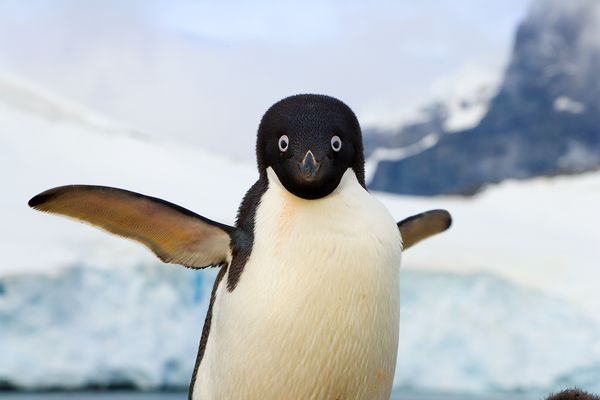In the months of my joblessness, I indulged in wildlife documentaries on the National Geographic Channel in those pockets of time when the drive to seek gainful employment simply eluded me. I could expound those videos into 20000 word essays, each marveling at the wonders of such intelligent creations of nature but my editor will probably cut them out of this post anyway so I shall stick to just one of them.
Let’s take some lessons from the Penguin today.
Staying Focused

After a penguin couple mates, they take turns to incubate the egg so that the other can venture out to the warmer waters to forage for food. And when I say forage for food, I don’t mean simply diving ten feet under the arctic ice for a fat salmon–each foodie hunt is an arduous journey that extends up to months (one-way swim). Multiply that by two and that’s the length of time the chubby little bird spends traveling to and from his local diner.
This process is long-drawn and tiresome to say the least, but the penguin never forgets that its intermediate aim is to fill and fuel itself, in order to attain its ultimate goal of returning to its nest to care for its chick.
Be it home, a marriage, college graduation, or that job you’ve been tirelessly working towards getting an offer, the bottom line is this – stay focused on the interim aims so that you can eventually score that ultimate goal. Keep your eyes on what you envisioned so that you will see it fulfilled in reality; don’t lose sight of that pot of gold at the end of the rainbow.
Walking Wounded

After the penguin has had its fill of fish, it wastes no time in heading straight back to its Arctic home where the soon-to-hatch chick is waiting. At this point, a whole army of penguins would glide seemingly effortlessly through the surging waves and waters. Eager and excited, they forge ahead powerfully and fearlessly. It is indeed a magnificent sight to behold.
Sadly, however, not all of them are able to last the way back home – not because they are weak or plain lazy, but because the path back to the Arctic is lined with predators such as hungry seals and starving sea lions. The not-so-lucky penguins get devoured mercilessly; while the slightly more fortunate ones manage to escape with a missing foot or an injured wing. Yet, for all these travails that assail the homebound penguins, they don’t stop marching; they don’t take their eyes off the North; they stick to the trek, walking on wounded.
When life deals us a blow that knocks us down flat on our faces, we might suffer a broken nose or a fractured limb. It would hurt and sting for a (possibly very long) while, but hey – we’re knocked down, not knocked out. Take heart, take a lesson from the penguin, and learn to walk on wounded. It’s not the end of the march yet, soldier. Steel yourself through the pain, and you will be able to steer yourself to safety.
Keeping The Faith

When the penguins finally arrive at their Arctic home, each calls out for its waiting mate, giving rise to a huge cacophony of chirps and cackles. It is amazing how penguins all look and sound the same to us yet among the brood of seemingly identical birds, each penguin is able to identify its own mate and reunite with its own family – mate to mate; parent to baby. Penguins are creatures of fidelity, they remain true to their spouses and families, keeping the faith and devotion that even humans lack.
For them, it might be staying faithful to their nest. For us, it could be honoring the commitment we made to our significant other, or to our friends who have stood by us despite having seen us at our best and our worst.
More importantly, it could mean staying true to ourselves – our dreams and beliefs, the values and convictions that have shaped and preserved us, as well as the pretty and not-so-pretty sides of ourselves. Or it could quite simply mean keeping the faith in a religious or spiritual sense – worshipping the God we believe in whatever our circumstance.
Keep the faith and you’ll keep the person you are, along with the people and things that matter to you.

P.S. Penguins are cool birds.
Also Read: What can I start doing now that will help me a lot in about five years?
This article is written by Elizabeth Lim.













